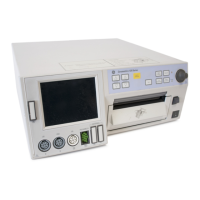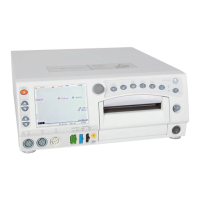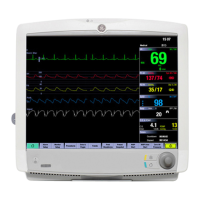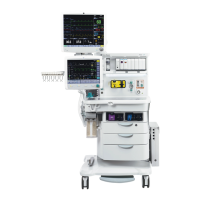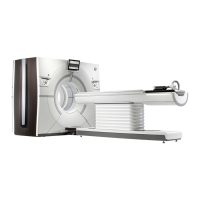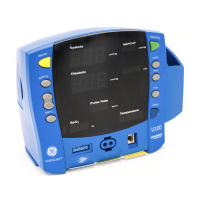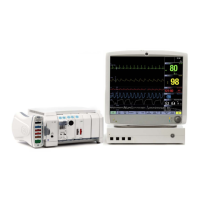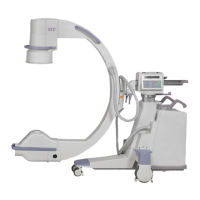Revision C 170 Series Monitor 6-9
2000947-004
Functional Checkout Procedure: FECG Test
13. Set the simulator’s
ECG Rate switch to the ∆15 position. Verify the following on
the monitor:
The FHR1 value oscillates by 15 BPM.
The FHR1 heartbeat indicator () flashes for each input signal.
The ECG “beep” is heard from the rear panel speaker.
The recorder prints an oscillation of 15 BPM between 115 and 130 BPM on
the top grid of the strip chart paper. (Figure 6-2. shows the strip chart paper
results.)
14. Repeat step 13 for the rate value of ∆22. The result should be the same as step
13 except that the FHR1 value oscillates by 22 BPM and the trend is an
oscillation of 22 BPM between the 108 and 130 BPM on the strip chart paper.
15. Set the simulator’s
ECG Rate switch to the ∆27 position. Verify the following on
the monitor:
The FHR1 value oscillates by 27 BPM.
The FHR1 heartbeat indicator () flashes for each input signal.
The ECG “beep” is heard from the rear panel speaker.
The trend does not indicate any oscillation.
16. Access the Service Setup Mode and disable ECG Artifact Elimination.
17. Set the simulator’s
ECG Rate switch to the MANUAL position and the Manual
Adjustment
knob to the fully counterclockwise position. Disconnect the ECG
simulator sub-cable from the monitor’s FECG receptacle. Verify the following
on the monitor:
The FHR1 value is blank.
The FHR1 trend stops plotting on the strip chart paper.
After approximately 30 seconds, the message CARDIO INOP prints on the
center margin of the strip chart paper.
18. Set the simulator’s
ECG Mode switch to the OFF position.
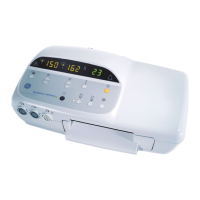
